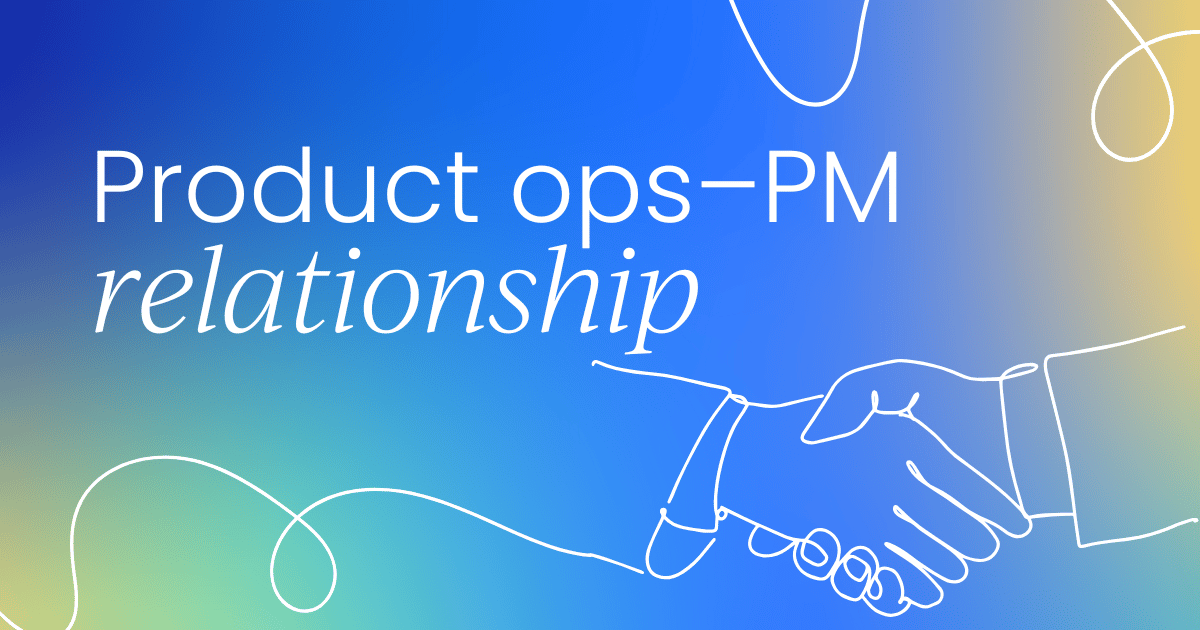Did you get into product ops to push papers? To chase down product managers? To be seen as the process police?
Probably not.
You’re in this role to be a strategic partner, a problem solver, and a force for efficiency. You’re the connective tissue between product, engineering, customer success, and leadership – constantly working to spot and solve inefficiencies and misalignments.
But there’s a problem. Our latest State of Product Ops Report reveals a significant gap where you’d least expect it: with product managers. While PMs are the primary partners for product operations, one in five product operations professionals report that less than half of their product managers actively engage with their processes.

For product operations to become a truly effective strategic partner, this gap has to be bridged.
This article is your roadmap. We’ve gathered advice from the experts on how to build trust, prove your value, and transform from a reactive support role into a strategic powerhouse.
Let’s dive in.
The current state of the PM–product ops relationship
In many organizations, product operations is seen as an enablement function, and its success is often measured by how well it supports internal teams. Our report confirms this, with cross-functional alignment (93%), process optimization (90%), and tool administration (81%) listed as the top three responsibilities.

But the engagement gap is real, and it represents a huge missed opportunity. So, why is this happening? Our research points to a few key reasons:
- Role ambiguity: The number one challenge cited by product ops pros is a lack of clarity in roles. In other words, PMs may simply not understand what you do or how to work with you.
- Perception as a compliance function: If your work doesn't feel immediately useful to a PM, it can be seen as an internal “compliance” function – and busy PMs will always prioritize a pressing product task over what feels like an administrative burden.
- Reactive operating mode: The most common mode of interaction is ad hoc collaboration. This means you’re often pulled into issues reactively, rather than proactively getting ahead of problems with PMs.
This creates a frustrating cycle: PMs don’t engage because they don’t see the value, and you can’t demonstrate value if PMs don’t engage with you. But don’t worry – you can break this cycle.
A roadmap for building better relationships
Here are four key strategies to help you build more effective, collaborative, and strategic relationships with your product management peers.
1. Focus on quick wins
The quickest way to earn trust is by solving an immediate pain point. As Chris Butler, Director of Product Operations at GitHub, suggests, you need to “meet them where they are.” Don't try to change everything in one go. Instead, find a small, tangible improvement that removes friction from a PM's day-to-day work.

2. Practice proactive engagement
Instead of waiting for PMs to come to you, proactively reach out. Ask them for their input on process improvements and collaboration workflows. This shows you value their perspective and are working with them as a partner, not a taskmaster.
3. Shadow product managers
If you want to create processes that enable product managers to do their best work, you have to understand their world. That means immersing yourself in their day-to-day, participating in team meetings, and observing how they interact with other parts of the organization.
This way, you can spot the hidden challenges and patterns in how PMs work, which is the key to creating solutions that address the real problems they face.
4. Communicate value, not just processes
You might be a wizard at building processes, but if you can’t communicate why they matter, no one will care. As Graham Reed, Head of Product Operations at Heliox Group, says, “Ensure they know WHY you are building X process, and what the value to them is.”

When a PM understands that a new tool will save them ten hours a month on data analysis, they’ll be much more likely to embrace it.
5. Focus on enablement, not control
Your primary focus should be on creating a positive and effective experience for product managers, not controlling or pressuring them. In organizations where PMs are highly confident and experienced, it's especially important to focus on enabling them to do their thing as effectively as possible – without stepping on their toes.

As Chris Butler points out in Cracking the Product Operations Code, “You’re not here to control or pressure the product managers. Your focus is on making their experience positive and awesome.”
6. Reduce friction
One of the most valuable things you can do for PMs is to free up their mental bandwidth.
In his appearance on the Product Ops Chronicles podcast, John Cutler, Head of Product at Dotwork, suggests looking for tasks that are treated like big conversations but could just be simple updates.
By streamlining tasks like routine status reports or information requests, you reduce the “work around the work” and allow product managers (and yourself!) to focus on higher-value activities.
7. Focus on the success of the product, not just the PM
While PMs may be your primary stakeholders, your ultimate goal is to support the creation of great products. This broader perspective elevates the relationship from a support function to a strategic partnership. Frame your work around the shared mission of building products that customers love and use.
8. Leverage data and metrics to prove impact
Measuring the impact of product operations is tough, but it’s essential for proving your value. Our report found that over half of teams use PM satisfaction scores, which is a great start – but you can go further.

Focus on what Topher Fox calls “operating model metrics,” like time to problem discovered, time to solution discovered, and value of feedback. By tracking these, you can quantify how your work is making the entire product team more efficient. And for a truly strategic approach, tie your work to broader business outcomes like customer retention.
9. Embrace AI and automation
To make the leap from tactical support to strategic partnership, you need to leverage new technologies. While only 5% of dedicated product operations teams have high levels of automation today, nearly half of product ops folks see AI-driven workflows as central to their future.

By using automation to handle repetitive tasks like data aggregation and reporting, you can free up valuable time to focus on more strategic work – like providing data-driven insights to leadership and PMs, ultimately earning yourself a seat at the strategic table.
Conclusion
Product ops has the chance to redefine its role: not as a reactive support team, but as the driving force behind product excellence. The question isn’t whether PMs will engage – it’s how quickly you’ll show them why they should. Build the trust, prove the value, and lead the way to better products, together.



 Follow us on LinkedIn
Follow us on LinkedIn



